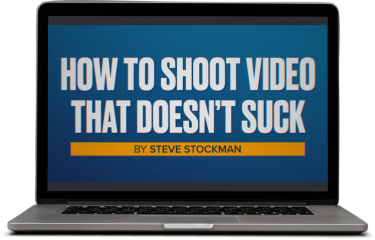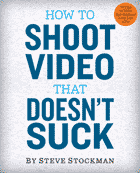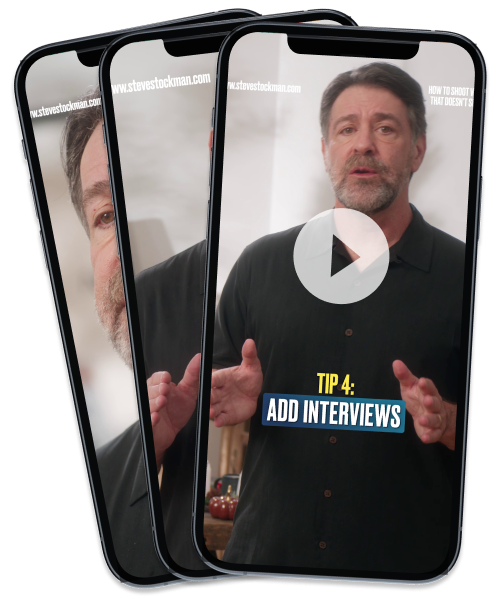In Part I of this post, we laid down the basics for How-To Video. Now lets go for mastery. The key to which, as with so many other elements of video, is story.
Think about your video as a real film, with real story elements. The simplest story in any how-to video is the journey, where the hero takes us from not-done to overcoming-obstacles to done. The more challenging the journey, the better the video.
How much journeying you can do in your how-to video depends on your audience’s needs. If people will watch while they do the how-to step by step, you want to play it pretty tight. Just show me “How to replace the valve on my dishwasher” and get out.
But if you’re teaching “How to shop for fresh fish,” we’ll learn from the quest– visiting the docks, the early morning market, and different shops, trying to find the freshest fish at a great price. The viewer is walking away with an education (yes, we’ve taught a man to buy a fish), not a one-time-only mechanical process. Telling a good story helps us remember the lessons of the shopping process.
This video from my friends at ChefSteps.com shows how a higher concept “how to” can be interesting even if you’re not following the steps while you watch. It’s a journey, from “you have no idea how to do this” through “practice” to “now you can pour a heart in your foam at home.”
Here are a few ideas to add a journey story to your how-to video. Use them sparingly, and only when your audience will really be willing to watch:
- Make a real documentary Do your “how to” journey for real, on a real project. Take us with you, so we’re in suspense about how things turn out. Show us disasters along the way (struggle is the essence of story), the real emotion, and the people you meet.
- Detail the prep Don’t start the strawberry shortcake video in the kitchen. Start it at the farmer’s market while you search for the perfect strawberries.
- Cut non-story details You don’t need to spend a lot of time in your video telling us where to buy a part if the order form appears on the page just below. What can you cut to make your video pure story?
- Teach someone else Document yourself teaching a real class, letting the students stand in for the viewer. Their real questions– and real mistakes– keep the story interesting.
- Add Humor If you are actually funny, or in a funny situation, use it. If nobody has ever told you you are funny, you may want to give this idea a pass.
- Look for a Payoff If your how-to is “how to make a Mothers Day Bouquet” let’s see mom being surprised with it at the end. If it’s “how to train your dog” let’s see reactions when 1o-year old Keisha masters training the family malamute. How has learning this new skill made someone’s world better?
This article was written in response to a great question. Do you have a great question? You should ask it! Click here and start typing.

Get a free preview of the new video course!
Sample two lessons from our new video course free right now. No signup or credit card required!










 Steve Stockman is a writer/ producer/ director in Los Angeles. How to Shoot Video That Doesn't Suck, available in 9 languages, is the best selling video how-to book in the world. You can find the updated edition from Workman Publishing wherever you get books, ebooks or audiobooks.
Steve Stockman is a writer/ producer/ director in Los Angeles. How to Shoot Video That Doesn't Suck, available in 9 languages, is the best selling video how-to book in the world. You can find the updated edition from Workman Publishing wherever you get books, ebooks or audiobooks. 
